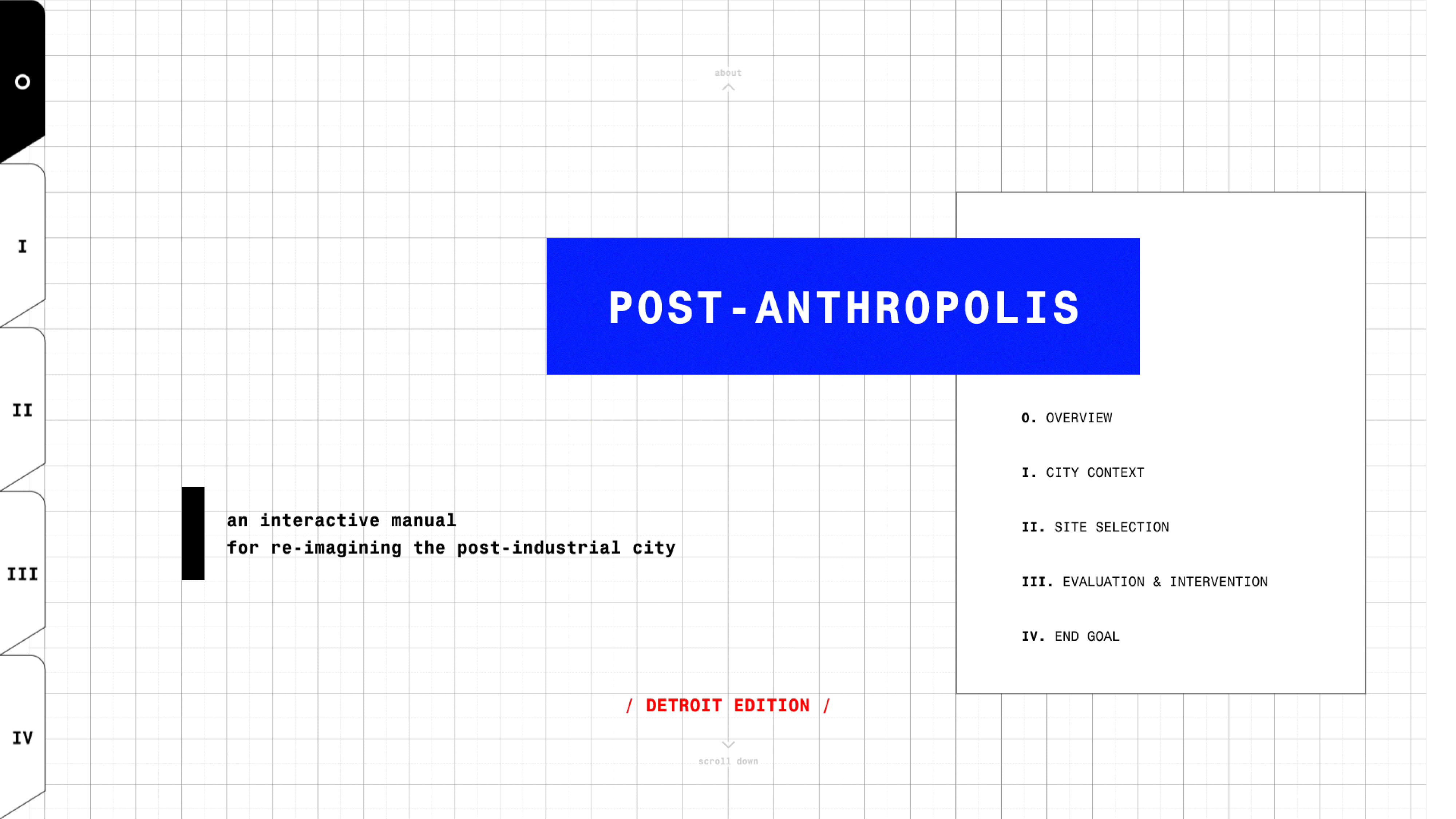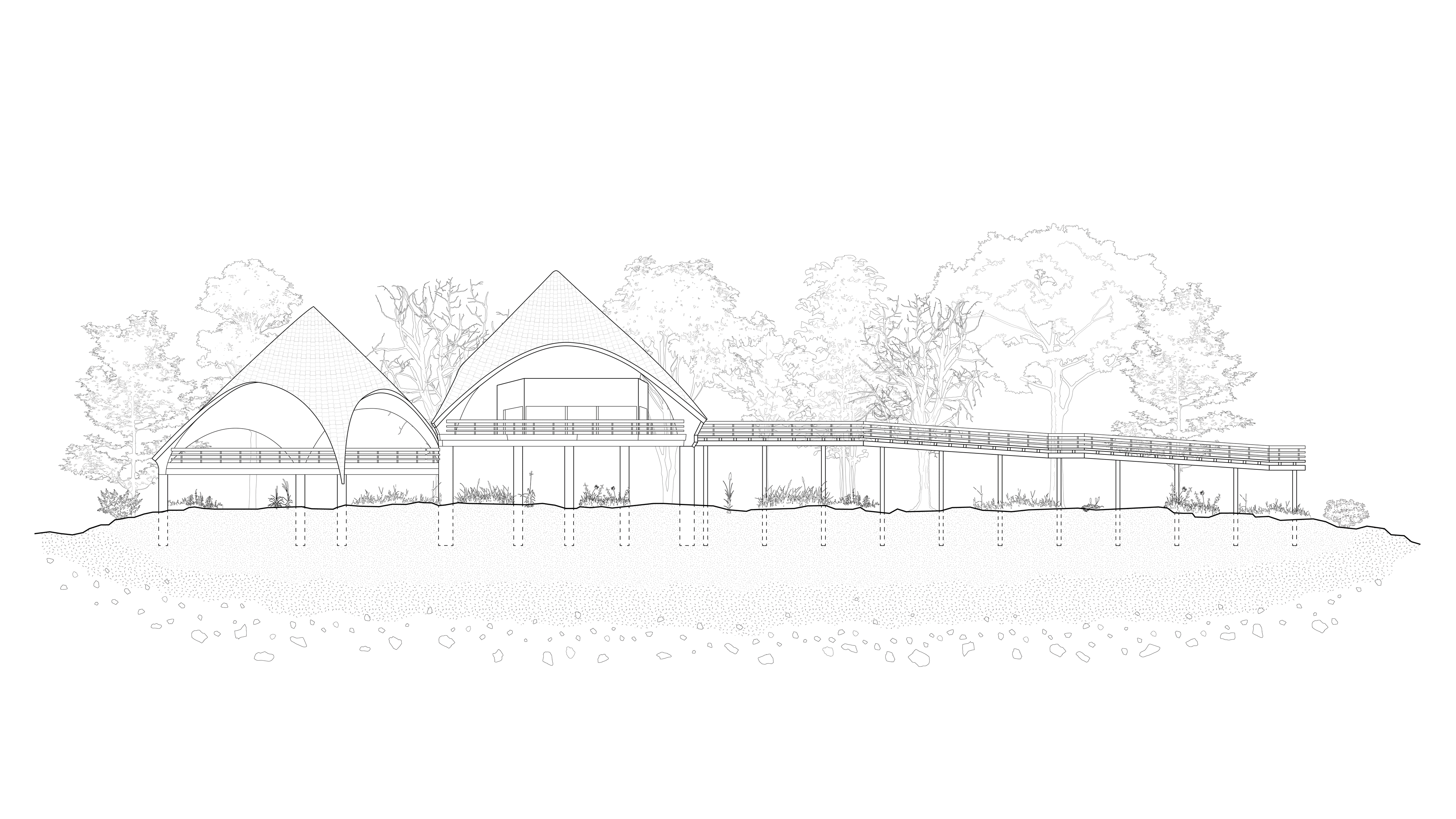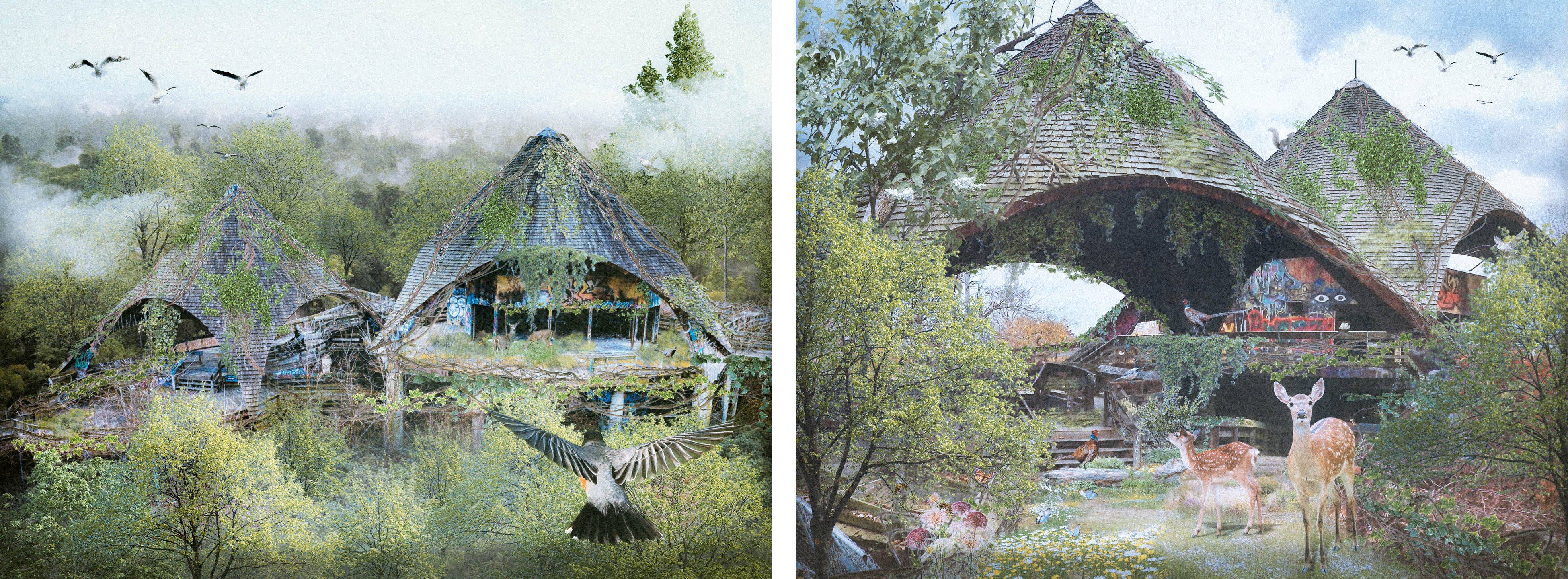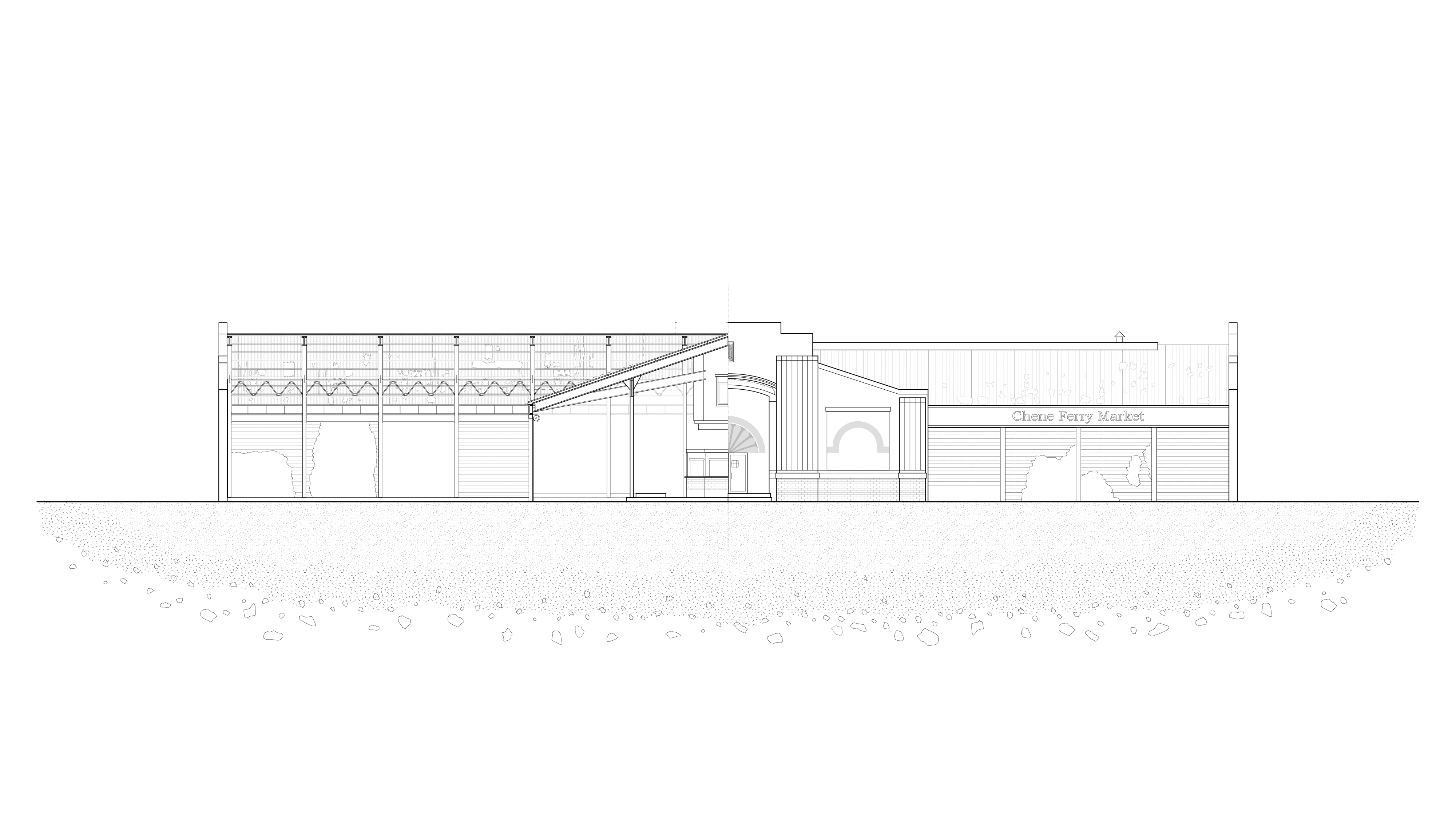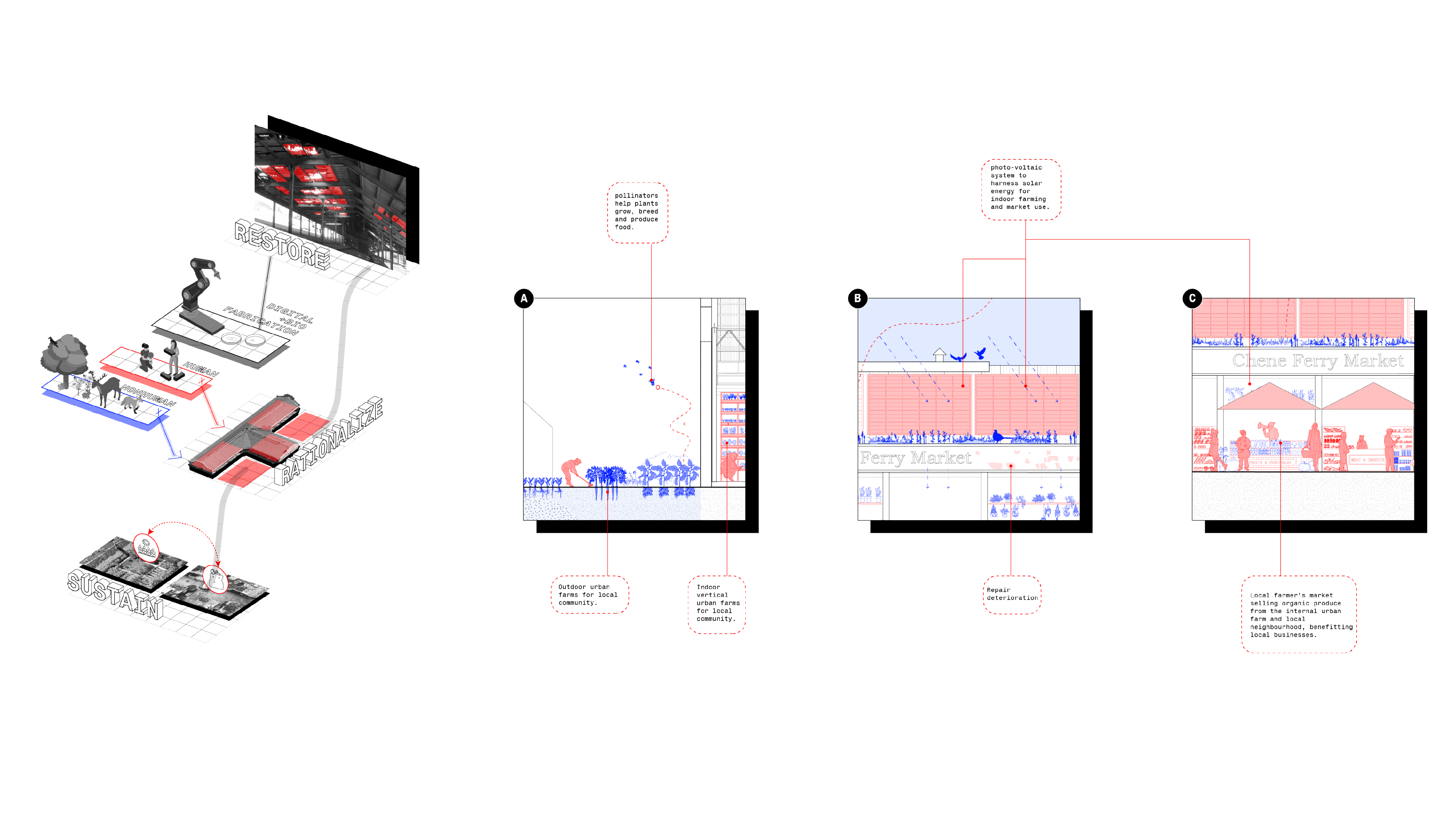Nicole Li & Rita Wang
Post-Anthropolis: an interactive manual for re-imagining the post-industrial city
Embedded in our current lifestyle is the deep-rooted mindset of human supremacy and anthropocentric thinking. Humans consider themselves the center of the ecosystem, often overlooking that we are part of an entire network, and our actions have detrimental impacts on the whole system. Post-AnthroPolis is an investigation of a long-term, future scenario. As humans and non-human species migrate due to climate emergencies, built forms are abandoned, creating opportunities for us to reimagine the city to incorporate non-humans back into a symbiotic ecosystem. A reorientation of architectural thinking and worldview is imperative to develop a capacity for biodiversity in architecture.
Within the industrial city, modernity brought forth technological innovations that have benefited civilization and built forms. This movement led to a deep-rooted mindset of human supremacy and anthropocentric thinking embedded in our current lifestyle and how we build. Humans and built forms have developed a relationship that succeeds at the expense of non-human forms – causing a mass extinction of non-human life and threatening ecological stability.
In the context of post-industrial cities, we can find opportunities to re-incorporate non-humans into a better relationship with humans and built forms. By redefining this framework and relationship, all parties can be considered equal participants within a new city typology, which we call Post-AnthroPolis: a post-anthropocentric city.
This interactive manual presents a strategy for reimagining the post-industrial city that can be applied worldwide.
Within the industrial city, modernity brought forth technological innovations that have benefited civilization and built forms. This movement led to a deep-rooted mindset of human supremacy and anthropocentric thinking embedded in our current lifestyle and how we build. Humans and built forms have developed a relationship that succeeds at the expense of non-human forms – causing a mass extinction of non-human life and threatening ecological stability.
In the context of post-industrial cities, we can find opportunities to re-incorporate non-humans into a better relationship with humans and built forms. By redefining this framework and relationship, all parties can be considered equal participants within a new city typology, which we call Post-AnthroPolis: a post-anthropocentric city.
This interactive manual presents a strategy for reimagining the post-industrial city that can be applied worldwide.
